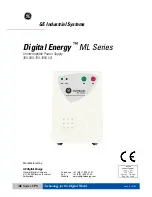
USV ME400/500/600/650/800
Instruction Manual
ME series
Page 10 of 32
4 Introduction
This manual is intended to provide basic information about single-phase line
interactive UPS equipment, namely the functional principle, use of the various
functions and the procedure to follow in the event of faults. In addition, this
manual contains information on transportation and storage as well as handling
and installation of the UPS equipment.
The planning guidelines in this manual relate only to the specific requirements
for UPS equipment. The national and local regulations for electrical
installations must be followed without fail during installation.
The contents of the description for this equipment may change as a result of
technological developments. Though we have endeavoured to make these
contents as accurate and clear as possible, we would be grateful for
information on any errors which are noted.
We accept no liability for errors in this description or their consequences.
The purpose of UPS (Uninterruptible Power Supply) equipment is to protect
sensitive electrical devices such as computers, workstations, electronic points
of sale, mission-critical instruments, telecommunications equipment, process
controls etc. from faults which may arise as a result of poor power supply
quality or even power failures. Sensitive devices such as these require
comprehensive protection against electrical faults. These may be external
faults (e.g. bad weather, operating faults) or faults caused by adjacent devices
(e.g. motors, air conditioning units, processing machines, welding equipment
etc.). The power supply faults may be summarised as follows:
o
Fast and slow line-voltage spikes and fluctuations;
o
Mains power failure;
o
Fast and slow frequency spikes and fluctuations;
o
Mains heterodyning or transient voltages.
The UPS equipment monitors the power supply parameters described above
using suitable countermeasures to protect the connected users (e.g.
changeover to support operation in the event of temporary over- or under-
voltage to protect the end devices).











































